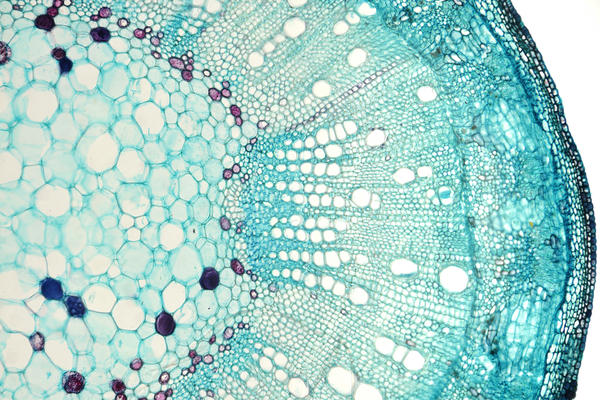Publications

Unless indicated otherwise, all the publications listed below are freely available in open access.
-
Big Data and machine learning techniques offer opportunities to investigate the effects of psychological factors on pain outcomes, but only if the data is of high quality and the underpinning causal assumptions are considered. We argue that there is room for improvement and identify some challenges in the evidence base concerning the effect of psychological factors on the development and maintenance of chronic pain. In particular, there is a need to be more transparent about causal assumptions in research. This will lead to better research designs, more appropriate statistical analyses, and constructive discussions and productive tensions that improve our science.
-
Crombez G, Veirman E, Van Ryckeghem D, Scott W, De Paepe A. The effect of psychological factors on pain outcomes: lessons learned for the next generation of research. Pain Rep 2023 Dec; 8(6): e1112.
-
Links: Original publication | PMID 38027466
-
Related research themes: Psychosocial factors (WP3), Data modelling (WP7)
-
-
Establishing cause-and-effect relationships is a difficult question in research. In this commentary, we encourage researchers to engage in causal thinking by using Directed Acyclic Graphs, which rely on expert knowledge rather than experimental data to reveal and display relationships between variables and outcomes.
-
Van Cauwenberg J, De Paepe A, Poppe L. Lost without a cause: time to embrace causal thinking using Directed Acyclic Graphs (DAGs). Int J Behav Nutr Phys Act. 2023; 20:145.
-
Links: Original publication | PMID 38082338
-
Related research themes: Psychosocial factors (WP3), Data modelling (WP7)
-
-
Studies of neuropathic pain have been hindered by issues such as a lack of consensus on phenotyping and small sample sizes. The key to overcoming these issues is through the creation of large consortia and biorepositories, where a common approach can be taken to chronic pain phenotyping. This review describes the approach that was used for studying neuropathic pain in DOLORisk and how this has informed current projects such as PAINSTORM, the rephenotyping of UK Biobank, and other endeavours.
-
Hebert HL, Pascal MMV, Smith, BH, Wynick, D, Bennett, DLH. Big data, big consortia, and pain: UK Biobank, PAINSTORM, and DOLORisk. Pain Rep 2023; 8(5):p e1086.
-
Links: Original publication | PMID 38225956
-
Related research themes: Protocols and recruitment (WP1), Genetic factors (WP5)
-
-
Dorsal root ganglia (DRG) neurons have been well described for their role in driving both acute and chronic pain. Although nerve injury is known to cause transcriptional dysregulation, how this differs across neuronal subtypes and the impact of sex is unclear. Here, we study the deep transcriptional profiles of multiple murine DRG populations in early and late pain states while considering sex.
-
Barry AM, Zhao N, Yang X, Bennett DL, Baskozos G. Deep RNA-seq of male and female murine sensory neuron subtypes after nerve injury. Pain 2023 Oct 1;164(10):2196-2215.
-
Links: Original publication | PMID 37318015
-
Related research themes: Genetic factors (WP5), Human tissues (WP6)
-
-
Previous epidemiological studies of neuropathic pain have reported a range of prevalences and factors associated with the disorder. This study aimed to verify these characteristics in a large UK cohort.
-
Baskozos G, Hebert HL, Pascal MMV, Themistocleous AC, Macfarlane GJ, Wynick D, Bennett DLH, Smith BH. Epidemiology of neuropathic pain: an analysis of prevalence and associated factors in UK Biobank. Pain Rep 2023; 8(2): e1066.
-
Links: Original publication | PMID 37090682
-
Related research themes: Genetic factors (WP5)
-
-
This review aims to discuss the planning and preparation for completing a meta-analysis, review commonly used meta-analysis models, and evaluate the clinical implications of meta-analysis in pain research.
-
Fundaun J, Thomas ET, Schmid AB, Baskozos G. The power of integrating data: advancing pain research using meta-analysis. Pain Rep 2022; 7(6): e1038.
-
Links: Original publication | PMID 36213594
-
Related research themes: Data modelling (WP7)
-
-
Using data from the DOLORisk cohorts, we built models that classify painful versus painless diabetic peripheral neuropathy using quality of life, lifestyle, demographics, personality and psychology traits, and biochemical and clinical variables as predictors.
-
Baskozos G, Themistocleous AC, Hebert HL, Pascal MMV, John J, Callaghan BC, Laycock H, Granovsky Y, Crombez G, Yarnitsky D, Rice ASC, Smith BH, Bennett DLH. Classification of painful or painless diabetic peripheral neuropathy and identification of the most powerful predictors using machine learning models in large cross-sectional cohorts. BMC Med Inform Decis Mak 2022; 22(1): 144.
-
Links: Original publication | PMID 35644620
-
Related research themes: Genetic factors (WP5), DOLORisk
-
-
This paper reviews the current state-of-the-art of peripheral nerve magnetic resonance imaging (MRI) in diabetic and HIV symmetrical polyneuropathy.
-
Evans MC, Wade C, Hohenschurz-Schmidt D, et al. Magnetic Resonance Imaging as a Biomarker in Diabetic and HIV-Associated Peripheral Neuropathy: A Systematic Review-Based Narrative. Front Neurosci 2021; 15: 727311.
-
Links: Original publication | PMID 34621152
-
Related research themes: Imaging and microneurography (WP4)
-
-
Bäckryd E, Themistocleous A, Stensson N, et al. Serum levels of endocannabinoids and related lipids in painful vs painless diabetic neuropathy: results from the Pain in Neuropathy Study. Pain 2024 Jan 1;165(1):225-232. Original publication | PMID 37578507
-
Lischka A, Eggermann K, Record CJ, et al. Genetic landscape of congenital insensitivity to pain and hereditary sensory and autonomic neuropathies. Brain 2023 Dec 1;146(12):4880-4890. Original publication | PMID 37769650
-
Cooper AH, Barry AM, Chrysostomidou P, et al. Peripheral nerve injury results in a biased loss of sensory neuron sub-populations. Pre-print
-
Faux P, Ding L, Ramirez-Aristeguieta LM, et al. Neanderthal introgression in SCN9A impacts mechanical pain sensitivity. Commun Biol 2023 Oct 10;6(1):958. Original publication | PMID 37816865
-
Eid SA, Rumora AE, Beirowski B, et al. New perspectives in diabetic neuropathy. Neuron 2023. Original publication | PMID 37263266
-
Schmid AB, Ridgway L, Hailey L, et al. Factors predicting the transition from acute to persistent pain in people with 'sciatica': the FORECAST longitudinal prognostic factor cohort study protocol. BMJ Open 2023; 13(4): e072832. Original publication
-
Themistocleous AC, Baskozos G, Blesneac I, et al. Investigating genotype-phenotype relationship of extreme neuropathic pain disorders in a UK national cohort. Brain Commun 2023; 5(2): fcad037. Original publication | PMID 36895957
-
Fundaun J, Kolski M, Molina-Alvarez M, Baskozos G, Schmid AB. Types and Concentrations of Blood-Based Biomarkers in Adults With Peripheral Neuropathies: A Systematic Review and Meta-analysis. JAMA Netw Open 2022; 5(12): e2248593. Original publication | PMID 36574244
-
Elafros MA, Andersen H, Bennett DL, et al. Towards prevention of diabetic peripheral neuropathy: clinical presentation, pathogenesis, and new treatments. Lancet Neurol 2022; 21(10): 922-36. Original publication | PMID 36115364. This article is currently under embargo and will be free to access on 1st October 2023.
-
Abbott MG, Allawi Z, Hofer M, et al. Acute small fiber neuropathy after Oxford-AstraZeneca ChAdOx1-S vaccination: A report of three cases and review of the literature. J Peripher Nerv Syst 2022; 27(4): 325-9. Original publication | PMID 35962630





